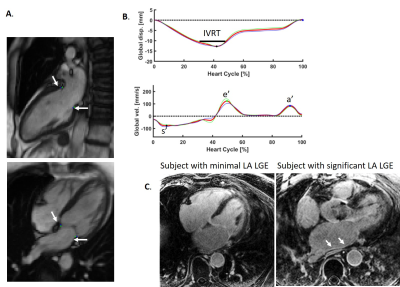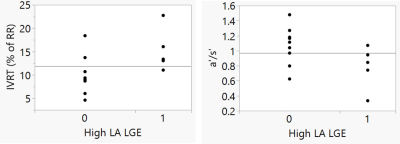Dana Peters1, Jérôme Lamy1, Felicia Seemann2, Einar Heiberg3, and Ricardo Gonzales1
1Yale Unversity, New Haven, CT, United States, 2National Institutes of Health, Bethesda, MD, United States, 3Lund University, Lund, Sweden
1Yale Unversity, New Haven, CT, United States, 2National Institutes of Health, Bethesda, MD, United States, 3Lund University, Lund, Sweden
We used machine learning to perform difficult analyses, to measure diastolic functional metrics.

Figure
1: A) Deep-learning identification of valve insertion points on long axis
cine (see blue markers, indicated by white arrows). B) Processing of valve locations to obtain IVRT and
e’, along with a’ and s’. C) Blinded
qualitative analysis of atrial LGE: one subject had only mild atrial
enhancement (left), while the other had extensive enhancement (right, arrows).

